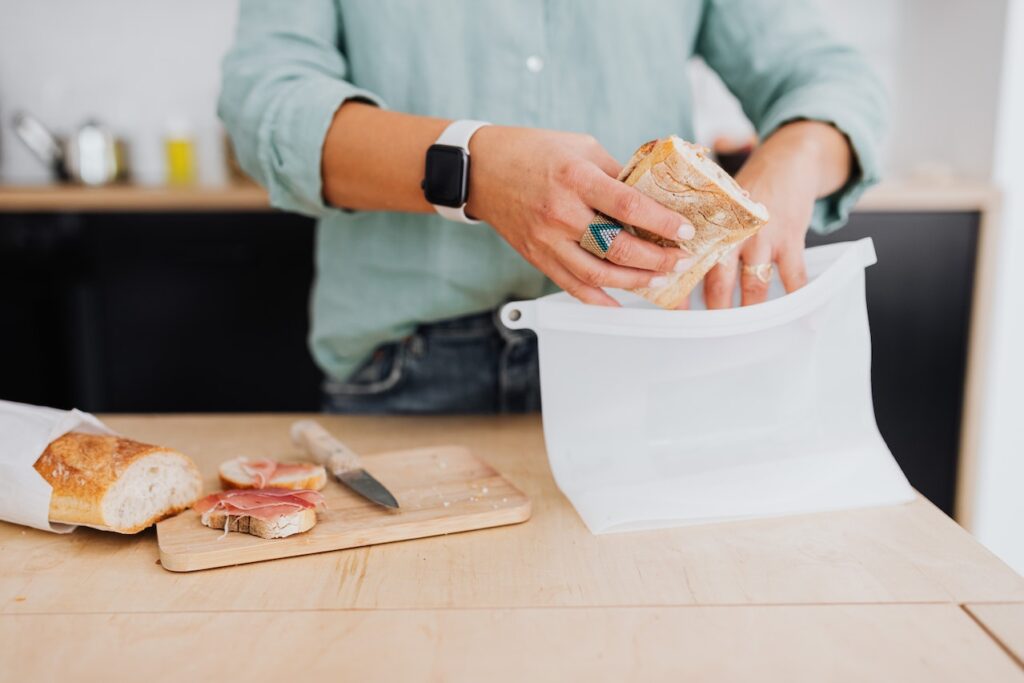As an Amazon Associate we earn from qualifying purchases.
Sous vide is a popular cooking method that has been used in restaurants for a long time. It has recently become prevalent among home cooks since it produces restaurant-quality food. However, the primary downside of this cooking method is the use of plastic, which is harmful to the environment.
The good news is that you can buy re-useable silicone sous vide bags and clean them to reduce the environmental impact. While it is possible to clean and reuse a Ziploc bag, I do not recommend it as they are not designed for constant heating and re-heating without degraded quality.

Quick Navigation
How to Clean Sous Vide Bags
It is essential to clean your sous vide bags between subsequent uses due to the risk of cross-contamination. Moreover, in addition to sanitizing the bags, you should also sterilize them to kill bacteria and make them safe to reuse. Here is how to clean a sous vide bag:
- Use your regular dish soap to clean the bag, paying particular attention to the seams where bits of food can get stuck
- Rinse out the soap with hot water. The temperature of the water does not have to be scalding
- Once you have sanitized the bag, the next step is sterilizing them
- Mix one part bleach with ten parts of water to create a solution
- Submerge your bags in the mixture, making sure the solution comes in contact with every part of the bag, inside and outside
- Allow your washed bags to soak in the mixture for two minutes
- Discard the solution and rinse the bag thoroughly to remove the bleach solution completely
- Allow the bag to dry completely before you use it again
If you are using silicone bags, here is how you can clean them:
- Take a paper towel or soft cloth to clean the inside of the bag and remove any residual food particles and juices
- Use a soft bristle brush to scrub at and dislodge any stubborn food particles
- Wash the bag thoroughly with warm soapy water. You can also wash the silicone bag in the dishwasher safely without degrading its quality
- Dry completely before using or storing
Is It Safe to Reuse Sous Vide Bags?
You can use most top-quality sous vide bags again safely after a thorough cleaning. However, you need to pay special attention to the label when buying these bags to ensure they are food-safe.
Reusing Ziploc Bags
Ziploc bags are commonly found in most households for their multipurpose capabilities. You can store food in the freezer like steak, pack lunches, preserve snacks, and so on. You can also use some types of these bags for sous vide, as long as they are BPA-free with a high-quality seal.
They are an excellent option for sous viding cooking as they are cheap, effective, and readily available. While convenient, you should only reuse a Ziploc bag 2 to 3 times. This is because exposure to high temperatures can deteriorate its quality, no longer making it safe to use with food.
Moreover, not all Ziploc bags are made from suitable quality materials. A low-quality Ziploc may lose its sealing ability with subsequent uses, or the plastic breaks during washing, making the entire bag unsuitable for sous viding.
Reusing Silicone Bags
Silicone bags are made from sturdier, food-grade material and are mostly BPA-free. They are becoming increasingly common amongst home cooks who like to sous vide their food. These bags are easier to clean than Ziploc bags since you can put them in the dishwasher.
You can reuse them multiple times before discarding them since they can easily withstand high temperatures without degrading. This makes them safe to use repeatedly without worrying about dangerous compounds leeching into your food and causing serious bodily harm.
The silicone bags are more expensive than the common Ziploc ones. However, since they can be used multiple times before they need to be replaced, you save costs in the long run. Most silicone bags also have a higher capacity than other bags, so you can cook more food.

Why Should You Reuse Sous Vide Bags?
Sous vide bags are made from different plastic types and are often discarded after a single use. According to research, more than 380 million tonnes of plastic is produced annually worldwide. About 3% is in the ocean, which amounts to around 8 million tonnes of plastic.
Moreover, only 10 to 12% of the plastic is recycled, while the rest goes into landfills. Therefore, you should consider reusing the bag to minimize your contribution to plastic waste. The good news is that sous viding uses fewer resources than other cooking methods, so overall, it is a more sustainable option.
There was a point in time I was cooking pretty much everything in the sous vide, maybe 5+ times a week. Those bags really start to add up, and I started noticing the difference in the quality of Ziplocs and the less-than-perfect vacuum seals. If you love sous vide cooking and love the environment, I recommend using reusable silicone bags.
Can You Sous Vide Without Using Plastic Bags?
While the best sous vide bags can be reused multiple times, they eventually end up being discarded. Silicone is a great replacement for standard freezer bags or vacuum bags. Silicone bags are reuseable, non-reactive, and food safe and can easily be heated well above the ranges on your sous vide, making them a great alternative to plastic.
Conclusion
Cleaning a sous vide bag is not particularly difficult, does not take a long time, and prevents them from ending up in landfills or oceans. Sanitizing with soapy water and sterilizing with a bleach solution allows you to reuse the bag safely. You can also clean the silicone bags by putting them in the dishwasher.
